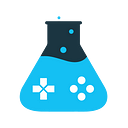A Comprehensive Overview of Game Development and Its Various Stages
Get ready to read highly anticipated tutorial series on a game development prepared by Gamix Labs.
Gamix Labs team wants to help out gaming enthusiast in creating their dream game, and started “How to” Series covering Major Game Development aspects.
We are covering a wide range of topics, the fundamentals of game development, including game design, asset creation, mechanics implementation, user interface, level design, testing, and publishing.
So, get ready for an exciting game development tutorial series that will be released every Tuesday and Thursday at 5 o’clock.
By reading these tutorials, you’ll gain a multifaceted skill set, master the craft of game development, navigate the technical landscape, and enhance user experience. Join us as we delve into the stages of game development, starting with an overview from conceptualization to publishing. Let’s dive in!
How does a game develop: Simple Terms?
Game development is a lengthy process and requires innumerable hours to divide for each aspect, and it starts with planning; just everything starts.
Conceptualization and Planning
The first step in game development is coming up with a clear idea and vision for the game. In this phase, game producers brainstorm ideas and decide on the game’s genre, setting, mechanics, and who it’s intended for, who will play it, and where. Although everything cannot be decided in the first phase, there is still something that cannot be missed even in the conceptualization phase too.
In this phase, you will have to think about how the game will play, what the story will be like, how it will look, and what technology it will require to work on. Creating a game design document (GDD) can help organize your ideas and serve as a roadmap for the project.
Pre-production
It’s an important stage where you lay the foundation for your game. During the pre-production phase, you’ll be working towards shaping your game idea and getting ready for development. In this phase, you will have to work on creating artwork to visualize your game, trying out different gameplay ideas, planning out the levels, and setting up the technical side of things like which is working best for your game idea and can give a better outcome than other development setups.
The production phase is also required to see deep and to decide the timeline for the project, assembling the development team, and allocate resources accordingly.
Production:
During the production stage, the development team works together to bring the game to life. In this phase, the development team creates game features and design levels and makes everything run smoothly. Programmers write code, artists create visuals, sound designers make sounds, and level designers build game environments. Testers test games as playtesting and making changes are important to make the game better.
Quality Assurance (QA):
Testing is an essential phase in game development where testers play the game extensively to find and report any problems. This includes things like glitches, crashes, or anything that feels unbalanced. The process continues until the game works well and is fun to play; mass tests take place after this.
Alpha and Beta Testing
Alpha testing is when a small group of players try out the game to find big problems and share their first impressions. It helps the developers identify major issues.
Beta testing comes after alpha testing and involves a larger group of players. The goal is to find more bugs, get feedback on game balance, and see if players are enjoying the game overall. It helps make the game better before its final release.
Polishing
During the polishing phase, game developers focus on making improvements based on feedback from alpha and beta testers. This includes making the gameplay mechanics smoother, enhancing the visuals, making the game run better, improving the sounds, and making the menus and interfaces more user-friendly.
Release and Distribution
When the game has crossed over all the major development aspects, then it’s time to share it with the world. In this step, the marketing team becomes active and starts creating marketing materials, planning a marketing strategy, and choosing where to release the game, like app stores, gaming consoles, or PC platforms. Factors to consider are how much to charge for the game, when to release it, and how to promote it to reach as many people as possible.
Post-Release Support
When the game’s released, the development team may continue to provide updates, patches, and new content to keep players engaged. Monitoring player feedback, addressing any remaining issues, and expanding the game’s content through downloadable content (DLC) or expansions can help maintain a thriving player community.
Conclusion:
Game development is a complex and iterative process that involves numerous stages, from the initial concept to the final release and beyond. By understanding the various stages and the tasks involved, you are better equipped to embark on your game development journey.
It is important to stay adaptable, embrace innovation, and strive for continuous improvement to thrive in the dynamic world of game development. So, embark on your game development journey with passion and determination, and may your creations bring joy to players around the world. Good luck!
